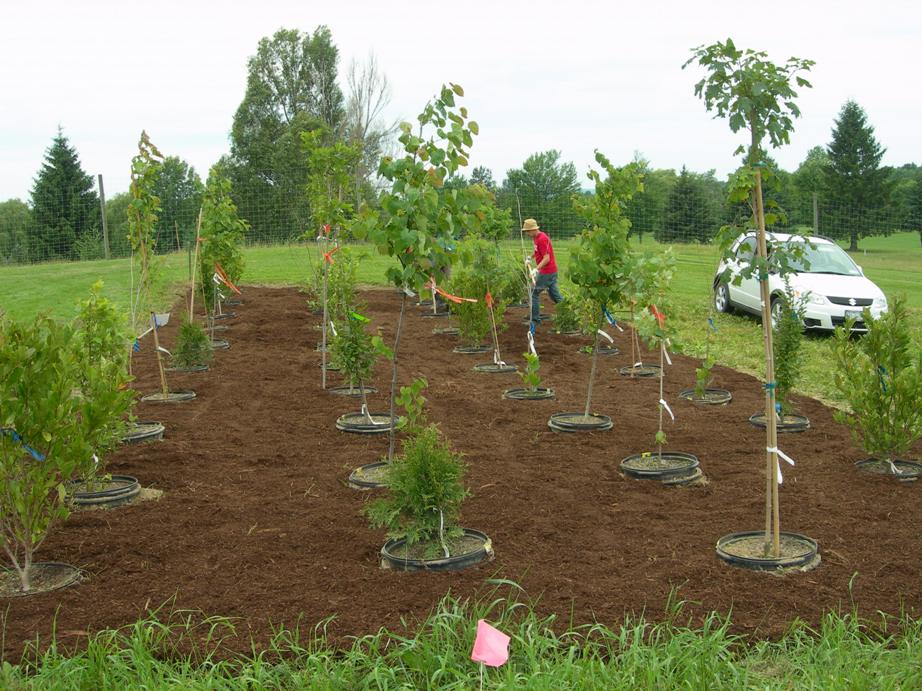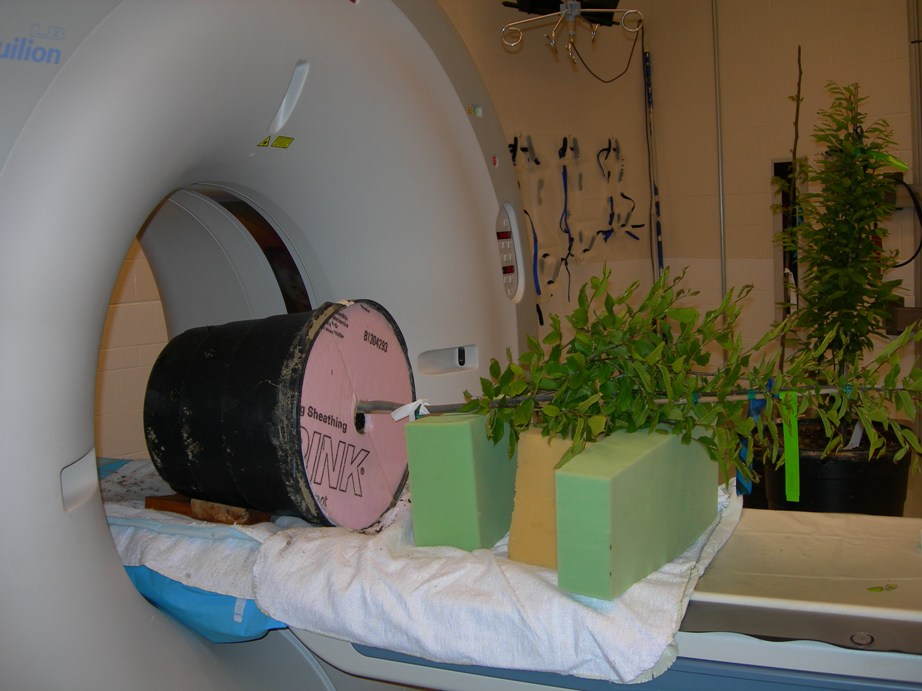You are here
Cornell University
 Pot-in pot research site at Blue Grass Lane research facility, Cornell University.
Pot-in pot research site at Blue Grass Lane research facility, Cornell University.The Cornell team's first year objectives were to:
- Investigate and characterize ten ornamental tree and shrub species for root development patterns in containerized systems using standardized soil media.
- Develop a non-destructive” technique to monitor temporal tree root systems including horizontal and vertical roots in order to reconstruct a 3D model of root system development.
- Meet with growers of containerized nursery stock to determine normal management practices and then to emulate nursery layout and design on a smaller scale at Cornell in order to provide the most accurate account of tree root growth.
 Example of tree root scanning using a Toshiba Aquillion 16-slice large-bore Computerized Tomography Unit
Example of tree root scanning using a Toshiba Aquillion 16-slice large-bore Computerized Tomography UnitTen common ornamental tree and shrub species were chosen for research on root development and shipped to Cornell in the same soil as used at Wiiloway nursery.
A plot was established with 4 replicates of each treespecies using the same spacing and irrigation practices as found at Willoway nursery (pictured above).
X-ray computer tomography technology trials at the Cornell University Veterinarian College from sample trees (pictured at left).
 The X-ray computer tomography results were evaluated for resolution and size capacity to ensure reproducible data sets would be obtained from sample trees (pictured at right).
The X-ray computer tomography results were evaluated for resolution and size capacity to ensure reproducible data sets would be obtained from sample trees (pictured at right).
